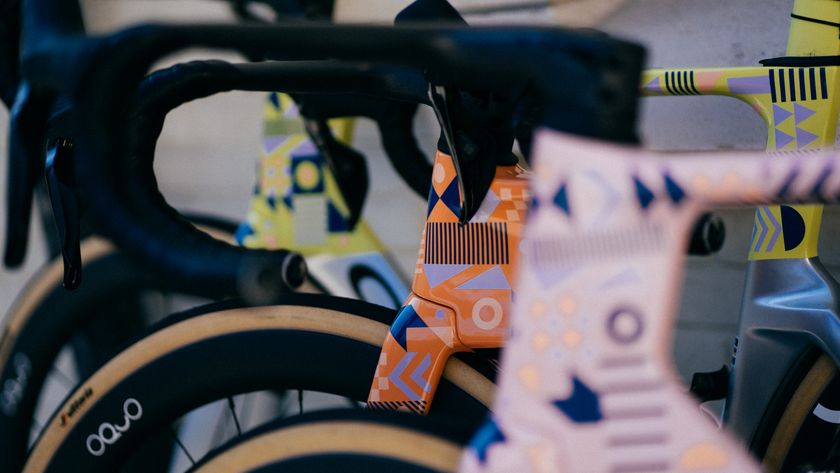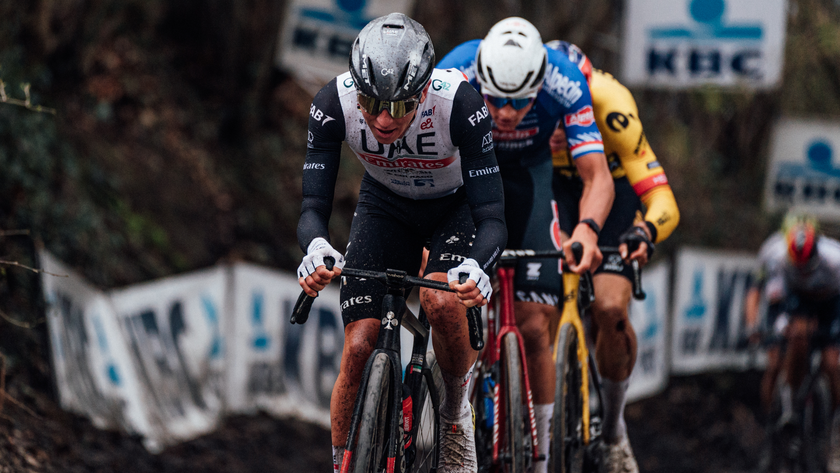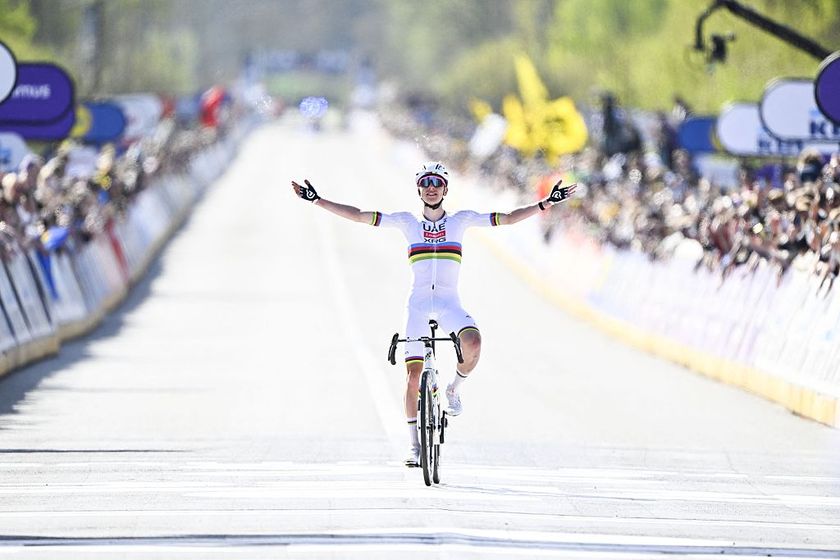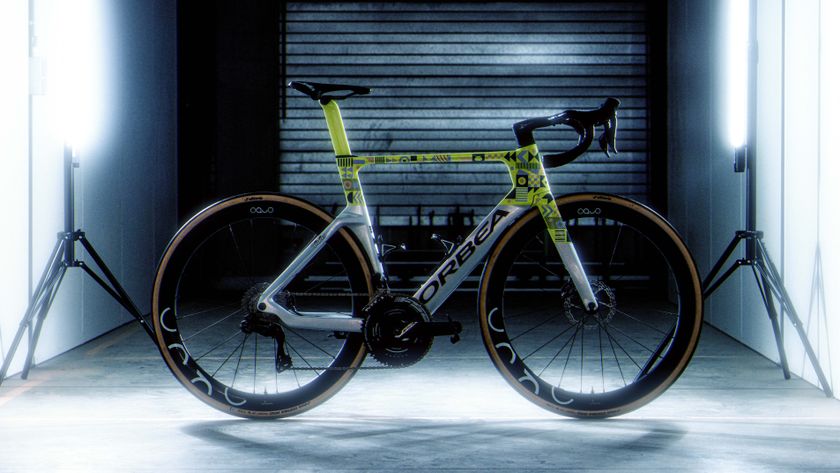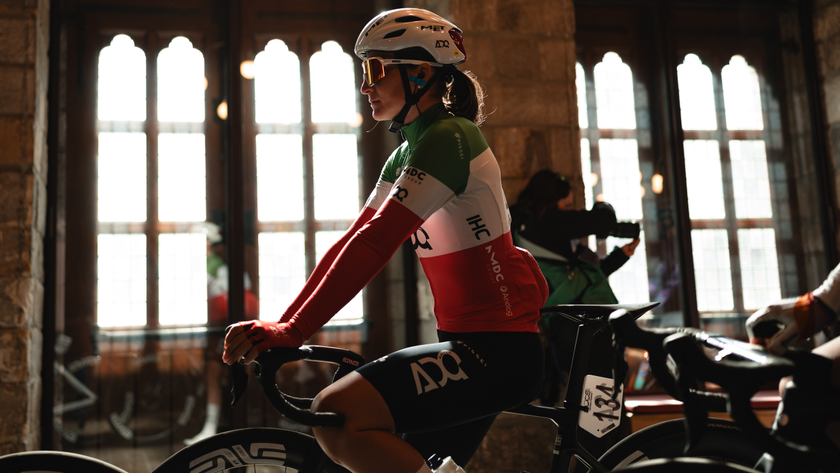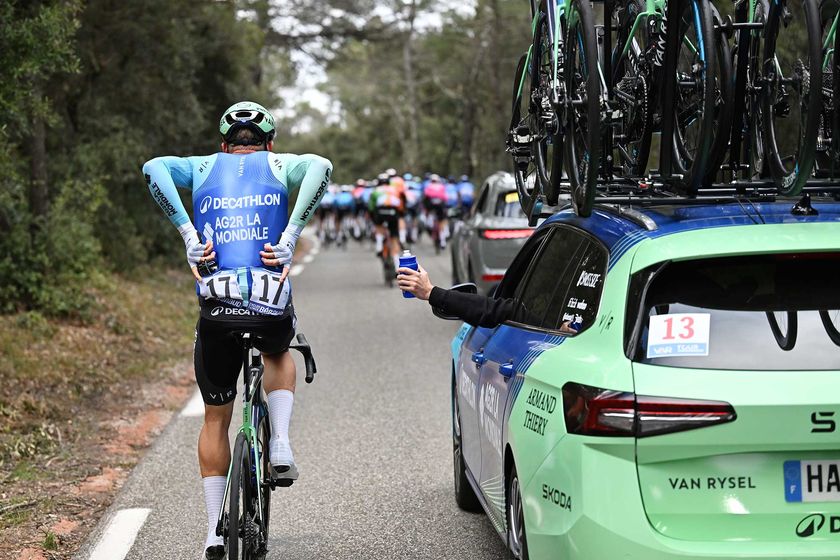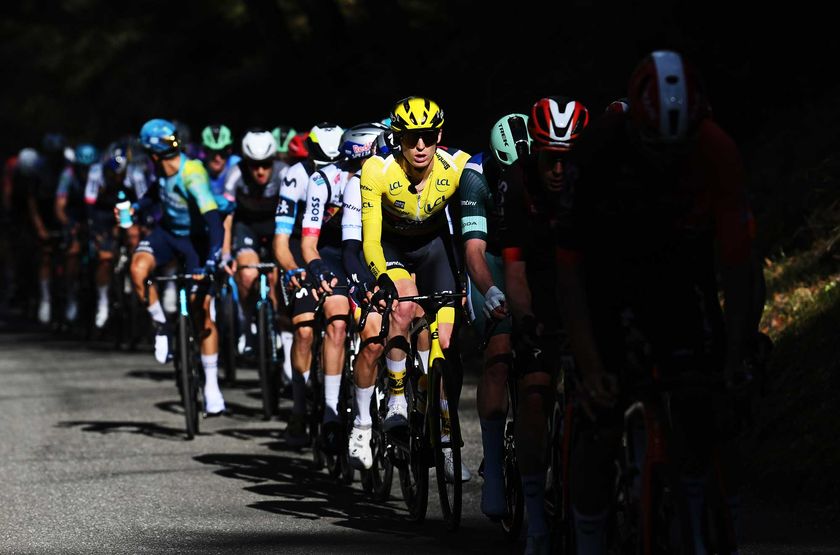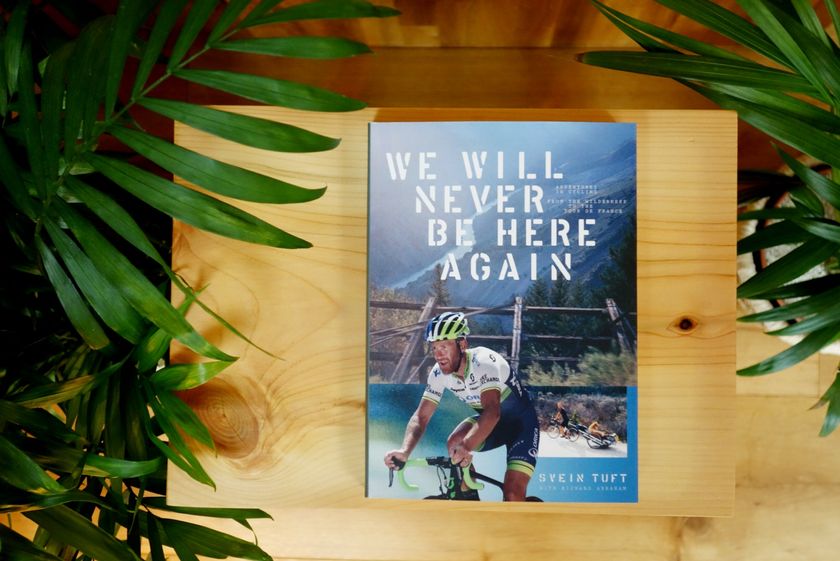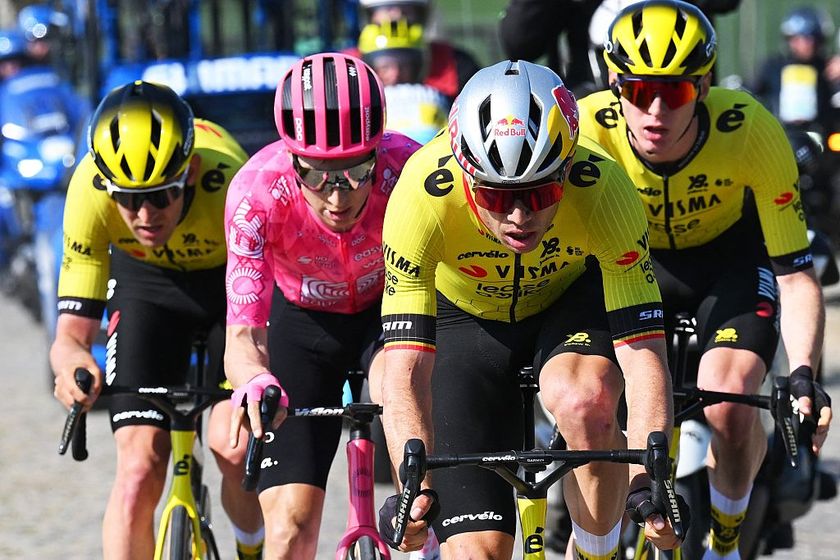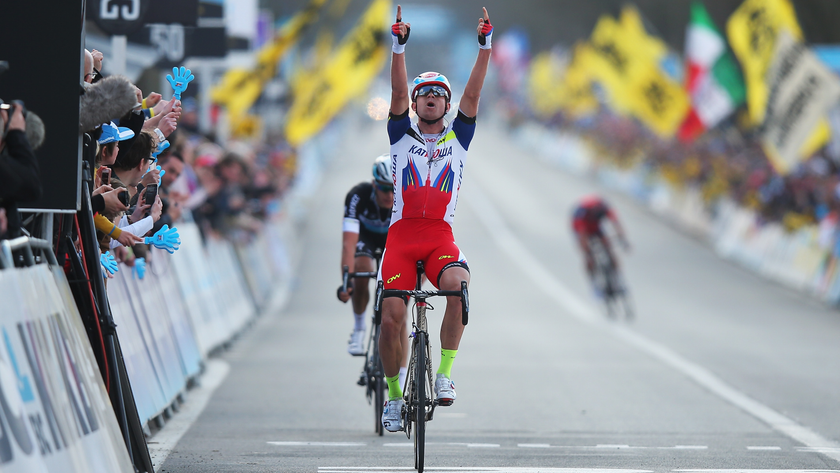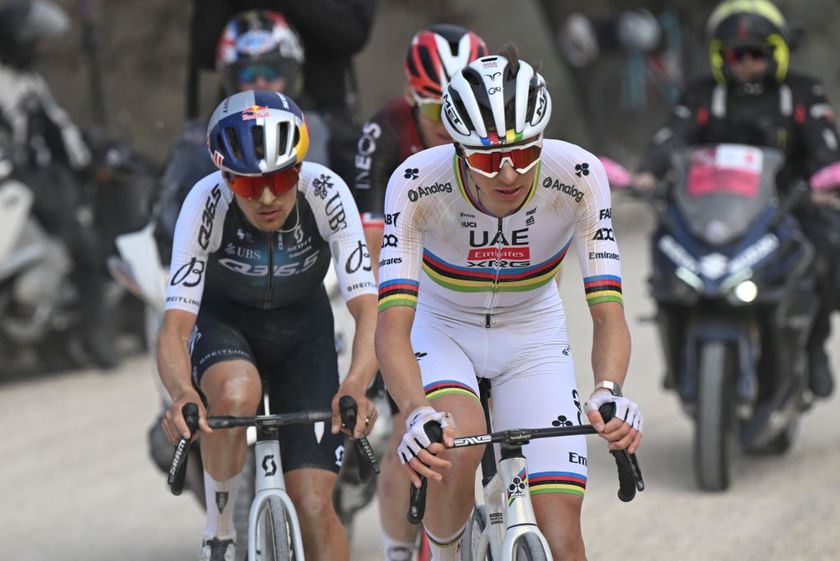Cyclingnews Fitness Q&A - December 4, 2009
Your fitness questions answered



Got a question for the fitness panel? Send it to fitness@cyclingnews.com. Emails may be edited for length or clarity, but we try to publish both questions and answers in their entirety.
Cause of knee pain
I've been experiencing pain in my right knee and the pain tends to move throughout a ride.
It may first show up in the back of the knee, then to the top of knee cap, then under the knee cap, then medial and lastly posterior. And, not in any particular order. I am a serial fitter and obsessed with understanding what my body is saying.
So after reading a tonne of literature, being Retul'd and having a very intensive (four hour) Q & A and working session with a professional Serotta fitter, nothing has helped.
My hamstring flexibility is an eight on a scale of 1-10 (10 being excellent), my knee tracking is spot-on, decent core, saddle to bar drop is inline with my flexibility and style of riding, as is my leg extension at 28 degrees at BDC. Both fitters indicated my cleat positioning looked perfect. I have switched to another bike, but the geometry and my position is aligned with the older bike. All components were transferred over.
Also, I just started getting stomach cramps as if I was out for a run right after dinner.
What's going on? I've taken a week off, taken it easy on the bike, but then the cycle starts again. I'm also taking a couple NSAID before I ride.
Get The Leadout Newsletter
The latest race content, interviews, features, reviews and expert buying guides, direct to your inbox!
My left leg feels as solid as an Oak tree, but my right leg, my dominant leg, feels flimsy with three distinct parts to it and my knee being the weak link. I'm only 37, don't run or do any weight lifting, yet.
Steve, I really need your insight.
Thanks,
Scott
Steve Hogg says
Scott,
Interesting story. The sites of pain on your right leg suggest you are extending too far. I don't think in terms of included knee angles at BDC because that approach is a bit formulaic for my taste. This is probably quite simple. One leg feels great while the other struggles. That suggests that either the right leg is functionally shorter OR that you are sitting too high. The stomach cramps suggest that you may be working your lower trunk hard to maintain a stable platform.
Here's what I think is likely to be happening. Any challenge to pelvic stablity on a bike seat will cause the rider to autonomically favour one leg over the other and that is why the left leg feels solid. This could be happening because A) the right leg is shorter or B) you have decided (at a level below conscious thinking) to look after the left leg by tilting our pelvis to the left or by dropping the left hip, which in turn increases the distance the right leg has to reach. I suspect all of this is because your seat is too high.
The simplest way to determine if what I'm saying is correct is to lower your seat in 3mm increments until the right leg feels rock solid. Once this achieved, ask yourself how the left leg feels. If it feels cramped and under extending, then either you have a measurably or functionally shorter right leg that needs shimming up OR you are still dropping the left hip which could be for any number of reasons.which need to be addressed.
If unsure; once you have found a seat height that gives a solid, fluent feel to the right leg pedaling action; mount your bike on an indoor trainer, pedal under load while stripped to the waist and have an observer stand above and behind you. Do you drop either hip?
Does one side of the pelvis sit further forward than the other?
And before you assume that this isn't the case, everyone displays some level of pelvic twist or hip drop on a bike. If the rider is functionally superior, then any asymmetries are near imperceptible. If the rider is functionally poor, then it is obvious to the naked eye.
Let me know what happens.
Training for health
A couple of questions for the coaches:
1) When one of your athletes faces a diminishing amount of time to train, at what point do you decide to pull the plug on racing? Any hard and fast rules on volume, or do you make the decision on the basis of results or testing?
2) Having decided to no longer pursue racing, how do you go about training for health? We all know racing isn't that healthy, and the hard training is part of that, but what part of a racer's training schedule would be useful to maximise an individual's health?
A friend and I were discussing this a couple of years ago; we agreed that a long easy ride each week would help keep the pounds off and could be social. I thought I would probably do some short high cadence sprint work (strength, agility, limb speed), and maybe some stomp intervals (good strength building, some aerobic effects). Neither too painful to dread doing, but would yield great benefits in muscle tone and hormone levels (HGH, testosterone etc).
My friend thought he'd do intervals, four minutes long, but not as many or as hard as he currently does. We contemplated some tempo riding (US system Zone 3). It'll definitely reduce a person's resting pulse and help with the fat burning, but maybe it's a bit too much wear and tear for a maintenance program. Maybe only half an hour every couple of weeks?
So this is what I've got:
Every week:
-A longish ride done at a casual pace (shooting for 3hrs)
-Some sprints (a small volume, and could be folded into the long ride if time was short)
Every other week:
-A ride with 4-6 stomp intervals
-A ride with two or three x 4 minute intervals done at 85-90 percent... not too killer
-A ride with 30 or 40 minutes of Tempo accumulated
-Maybe supplement this with a bit of lifting and some stretching
So what do the coaches think?
Mike Capp,
Madison, WI, USA
Scott Saifer says
Michael,
In general I don't set any lower limit on how much training is required for racing. Riders with a long riding history can often get away with less riding currently and still be strong enough to race. Some riders are just lucky and can race on less training than others, and of course riders have different goals. Some are not happy unless they are fit enough to stomp the competition.
Some riders are happy just to keep up, while others are happy if they can just hang on for a while. Some switch to doing only time trials so they can 'race' even when they are not close to being competitively fit. So, the bottom line is that you can keep racing as long as you are enjoying it enough to want to.
The research says that to maintain cardio-vascular health and keep the weight off, you need about an hour a day of aerobic activity. Riding the bike counts. Beyond that, the issues to be concerned about are maintaining motivation and avoiding injuries since you want to do this for the rest of your life.
Your suggested program looks fun enough to maintain motivation. I have two concerns though. One is that people who ride only a day or two or three per week don't have the recovery ability of people who do more base rides. That means that the harder rides you have proposed are going to leave you tired longer than they would have when you were doing race-training ride volumes.
You could easily get to the point where one sprinting or stomping ride leaves you tired for a week, demotivating you for additional rides in the week, and easing you into being a "weekend warrior", or as I prefer, a "weakened warrior".
The second concern is injuries. People who ride only a day or two per week have a much higher incidence of sore knees and other problems than those who ride 100 miles per week and three days per week or more.
Were I training an individual for health, I'd keep your weekly three hour ride, but include 2-3 more rides that are mostly at an easy pace, and 2-3 days of strength training to maintain muscle and bone mass. Then I'd remind you that when you are no longer training enough to be a racer, you're going to need to reduce your food intake a HUGE amount not to start gaining weight.
As an ex-racer myself, I'd say that the amount you can eat and not gain weight when training only a few hours per week is just not fair. I have sympathy of the overweight folks. Good luck.
Saddle choice
I just wondered if you could advise on a saddle. I'm an average cat 3 racer who has been riding for 20 years, since I was 13, and have raced on and off in that time.
I had been using a standard Fizik Arione saddle for a few years, but was never that happy with it, it was ok, but not great. Before that, the old style Flite Titanium, again, ok, but not great.
I was getting quite a lot of chafing from the built up sides and rounded profile of the Arione. I think my pelvis is quite narrow, but my thighs are quite big, the chafing tends to appear in my groin area.
I've found a low profile saddle shape stops the chafing, but murders my sit bones.
I've tried the Fizik Antares, Selle Italia SLR and Thoork and the Specialized Toupe. I liked the shape and feel of all of these but they all feel like they have no padding at all and cause me sit bone pain, one to the point they were still throbbing when I went to bed that night. But I find the low profile shape good for reducing the chafing and giving my thighs room to move, particularly the Thoork.
I've also tried the funny looking Selle SMP, and a ProLogo Scratch TR, both of which also hurt my sit bones.
I'm currently trying an Arione CX demo saddle, which is a reasonable compromise, as it has a lower profile than the standard Arione and reasonable padding, but still causes my sit bones grief after two hours.
I am basically trying to find a saddle that has a low profile, such as a Thoork/Antares, but which has plenty of padding, like the standard Arione. But I'm out of ideas.
I wear good quality shorts, always use chamois cream and have had two different bike fittings and am confident my position is correct.
Basically I just want to be able to sit on my bike and get on with the riding without constantly shuffling around or getting out of the saddle to alleviate my aching backside.
I realise saddle comfort is a personal thing, but is there anything you can recommend I haven't tried, or is it just a case of accepting I have a delicate behind and grin and bear it?
Thanks, and glad to see the fitness page is back,
Matt
Steve Hogg says
Matt,
The first thing that occurs to me when I read this is that it would be worth your while trying a lower seat height. Not as a way of relieving the discomfort that you feel by lessening performance but because it is likely that too high a seat height is the reason for your discomfort. I may be wrong in this but when someone has tried as many seats as you have and not found a comfortable one, the greater likelihood is that the position you hold on a bike is the problem rather than the seats you are trying.
Don't get me wrong; a seat is the most personal choice of equipment a rider can make and some people are unusually saddle sensitive and you may be one of them but the chances of that are not high. I would suggest experimenting with seat height and also cleat position. I find time and again that cleats that are too far forward can compromise seat comfort.Every aspect of bike position influences every other aspect. I can't find the old CN archive to give you a link too cleat position recommendations but have a look at this link and give the cleat position recommendations a try http://www.bikefit.com/docs/Footloose.pdf
If using those recommendations means a noticeable rearward adjustment of your cleats, then the seat height will almost certainly have to drop a bit further. A more rearward cleat position progressively limits ankle movement which has an effect on seat height.
I would be interested to hear back from as to what happens.
Recruiting glutes while riding
Hello,
I've been riding and training fairly consistently for about four years. I have experience racing road, mountain, and cyclocross, and train year round. I often have problems with my quads cramping in the late stages of 3+ hour rides, though at times it happens much earlier in a ride.
Additionally, when others that I train with speak of sore glutes after a ride, I never seem to have this problem. In fact, I can't definitively say that I engage my glutes while cycling much at all, at least not to the extent that they've ever been sore after a ride.
Since I continually have problems with 'over using' my quads and don't seem to engage my glutes regularly, is there anything I can do with my fit to help with this? I've heard that making saddle adjustments fore and aft will help recruit different or additional muscle groups, but I honestly don't know enough about fit to feel comfortable trying this without some advice from someone with more knowledge. If not fit related, is there anything else that might help me use more muscle groups while pedaling.
If you've addressed this in a previous post(s), please let me know as I'd love to be able to remedy this if possible.
Thanks,
Brian in Nashville
Scott Saifer says
Brian,
As a general rule, moving the saddle to decrease knee extension (forward or down) causes an increase in recruitment of the quadriceps, while increasing extension (moving the saddle up or back) increases recruitment of glutes and hamstrings with less quad recruitment, so it sounds like you need to increase extension.
Having the saddle nose tilted down excessively will also load the quads and you use those muscles to keep yourself from sliding forward. So, assuming your saddle is set so that the part you actually sit on is horizontal, it sounds like you need to increase extension. The question is whether to do that by raising the saddle or moving it back.
Here's a quick test: If you can comfortably and slowly switch both your hands at the same time from hoods to drops and back, your seat is far enough back. If you have to bounce your hands between positions, or switch one hand at a time, move the saddle back first. Move it in 5mm increments until you can shift hand positions slowly with ease.
If after getting the saddle far enough back you still find your quads loading, you'll need to raise the saddle. There are two approaches. If you have good body awareness, raise the saddle in 5mm increments until you feel that you are just beginning to reach for the bottom of the pedal stroke, and then go back one increment. (You don't want to feel any stretching for the bottom of the pedal stroke when you actually ride).
If you don't have good body awareness, just raise the saddle 5mm and go for a ride. If the quads are still getting overworked, raise the saddle 5mm again for the next ride and repeat until your quads are no longer doing the bulk of the work.
Let us know what happens.
Tightness in patella tendon
Dear Cyclingnews,
I have been struggling with a knee/hip/back problem for the second half of the 2009 season. When under load, the left patella tendon feels uncomfortably tight and my left hip gets tighter (the tendon is the main problem). This results in a loss of power and great discomfort.
I have been seeing top level physios and bike fitters, however the problem seems to be making little progress on the knee after a month of rehab. I have had several tests. First an EMG tests on various muscles while I was cycling. It showed that my right glute was producing half the power of my left. It also showed that my right hamstring was producing twice the power of the left (presumably to copensate). A test on a stationary bike showed that the power was equal for both sides of the crank though.
I also had an x-ray done which showed that my right femur was 8mm shorter than the left but the overall difference is 6mm.
I have been doing a program of physio and gym work- focusing on building up my right glute, increasing pelvic stability, and increasing flexibility. I am making progress with the exercises and feel much straighter on the bike and I am using my right glute more, but the tight fuzzy uncomfortable feeling under the patella remains. I feel as if my bike set up is correct.
Does anyone have ideas or experience about what it might be and how to fix it?
Thanks,
Sandy King
Steve Hogg says
Sandy,
You're correct about the right hamstring having to work harder if the right glute isn't firing properly. Power equivalence on each side doesn't give much insight into what is going on. Was the equipment you were tested on capable of plotting a torque curve for each leg separately? That would give some insight into what is going on
In the absence of that and based on what you have told me, here's my best guess. Right glutes not firing properly almost certainly means that your right psoas in particular and right side hip flexors generally are very tight. Tight hip flexors inhibit the glutes and a tight right psoas will pull the right hip down and forward on the right side pedal stroke. Bear in mind that the right leg is also measurably shorter.
If what I am assuming is correct and it is likely, then the plane of movement of the left knee will be challenged in the sense that as the right hip drops on the pedal downstroke, the left knee moves outward on the LH pedal upstroke. Then as the right hip rebounds more or less to it's proper position on the RH pedal upstroke (and in most cases it doesn't come all the way back to symmetry), then the left knee rolls in on the LH pedal downstroke under load. This can cause chrondomalacia in the left knee and it sounds like you are in the early stages of that.
Again, if what I am suggesting is correct, then the left side low back, principally the QL, bears the load of attempting to brace against the right side hip drop and your left ITB is probably also working too hard because of the compromised plane of movement of the left leg.
What to do?
You are working to strengthen and stabilise yourself but this will only help so far unless you address the on bike stressors. Firstly you have a shorter right leg and secondly I would just about bet that you have a tighter set of hamstrings on the right side than on the left side because that is a typical consequence of the situation you describe. That means that the right leg is likely functionally shorter than the measurable difference suggests.
You need to shim your right cleat so that you can effectively reach the bottom of the pedal stroke with miminal challenge to already compromised pelvic symmetry. I would suggest 5mm as a start but don't be surprised if you need more. You can make a shim from any suitable material. Failing that Specialized and Bikefit.com sell shims. Of the two, don't bother with the Specialized shims because they have a negative effect on the bodies proprioceptive response whereas the Bikefit.com shims don't.
I will declare an interest here because we manufacture the bikefit.com shims but this is not why I criticise the Specialized shims. The Specialized shims will do the same job but only at the cost of negating any proprioceptive feedback from the feet, which in my view is a big deal
Okay, so once you have shimmed your right cleat, be conservative in your choice of seat height. The correct seat height is not a matter of a suggested included knee angle. It is the height that you can ride up a steepish hill in a gear that is about 1 tooth too hard without sacrificing technique and being able to reach through the bottom of the pedal stroke with ease on both sides.
Lastly, don't let anyone tell you that a differential cleat position is the answer to the shorter right leg. Differential cleat position changes the relative muscle enlistment pattern of each leg whereas you need to achieve as similar a muscle enlistment pattern as possible. Additionally, cleat position is a contributing factor to pelvic stability on seat as we apply force alternately with each leg. Have a look at this article for some advice on cleat position and apply the suggestions there. http://www.bikefit.com/docs/Footloose.pdf
Let me know how you get on.
Best time of day to train
Hi,
I am a road rider/racer and mountain biker, hoping to do some cross country racing next season.
I cycle to work which is a circa 35km round trip. I do extended training rides twice a week of about 2 hours in duration. I do them before work starting on the bike at 6am.
My query is , does it make any difference if you train early in the morning or in the afternoon? Is morning time better or worse or does it make any difference?
I eat a breakfast of toast and cereal before I leave and tend to eat carbs for dinner the night before.
Charles
Dublin, Ireland
Scott Saifer says
Charles,
The answer to your questions is "yes and no". It doesn't matter if you train in the morning or the afternoon, so long as you are doing the same training. That raises a few questions. First, many people will skip afternoon training more often than morning training.
People who plan morning training are more likely to get it done. Plenty of people train fine in the afternoon, but life has a tendency to get in the way more too. So, question one: Will you get the time in consistently either way?
The "same training" doesn't mean just the same loop at the same speed. The training quality is also important. By the time the afternoon rolls around, will you be tired from work? Stressed? Training when you are already tired is less effective than training when you are full of enthusiasm and your heart rate is rising easily.
Some of my clients are slow waker-uppers. That is, it takes a few hours after they get out of bed before they are able to raise their heart rates normally, generate good power and so on. For them, training is not efficient unless they've been awake for a few hours, so early mornings are not good. What about you? Do you jump out of bed ready to fight bears? Or would you be more likely to ask the bears to come back later?
The ambient temperature can also make a difference: If you have a choice between training in pleasant or very hot weather, your training will be more effective in the pleasant weather as heat deceases your power output. If the choice is between pleasant and very cold, either can be equally effective if you can dress well enough to keep warm without overheating.
Traffic is another issue. At least in some places, traffic is more conducive to training at some times of day than at others.
So, as I said in the first paragraph, training in the morning or the afternoon can be equally effective, if you do the same training, but you need to examine yourself and your surroundings to see if the training will be the same.
The Cyclingnews Form & Fitness panel
Steve Hogg (www.cyclefitcentre.com) has owned and operated Pedal Pushers since 1986, a cycle shop specialising in rider positioning and custom bicycles. In that time he has positioned riders from all cycling disciplines and of all levels of ability with every concievable cycling problem. Clients range from recreational riders and riders with disabilities to World and National champions.
Scott Saifer (www.wenzelcoaching.com) is head coach, CEO of Wenzel Coaching.com and has been coaching cyclists professionally for 18 years. He combines a master's degree in Exercise Physiology with experience in 20 years of touring and racing and over 300 road, track and MTB races to deliver training plans and advice that are both rigorously scientific and compatible with the real world of bike racing.
Scott has helped clients to turn pro as well as to win medals at US Masters National and World Championship events. He has worked with hundreds of beginning riders and racers and particularly enjoys working with the special or challenging rider. Scott is co-author of Bike Racing 101 with Kendra Wenzel and his monthly column appears in ROAD Magazine.
Kelby Bethards, MD received a Bachelor of Science in Electrical Engineering from Iowa State University (1994) before obtaining an M.D. from the University of Iowa College of Medicine in 2000. Has been a racing cyclist 'on and off' for 20 years, and when time allows, he races Cat 3 and 35+. He is a team physician for two local Ft Collins, CO, teams, and currently works Family Practice in multiple settings: rural, urgent care, inpatient and the like.
Pam Hinton has a bachelor's degree in Molecular Biology and a doctoral degree in Nutritional Sciences, both from the University of Wisconsin-Madison. She did postdoctoral training at Cornell University and is now an associate professor of Nutrition and Exercise Physiology at the University of Missouri-Columbia where she studies the effects of energy balance on bone health. She has published on the effects of cycling and multi-day stage racing on bone density and turnover.
Pam was an All-American in track while at the UW. She started cycling competitively in 2003 and is a three-time Missouri State Road Champion.
David Fleckenstein, MPT, OCS (www.physiopt.com) is a physical therapist practicing in Eagle, ID and the president of Physiotherapy, PA, an outpatient orthopedic clinic focusing in orthopedics, spine, and sportsmedicine care.
His clients have included World and US champions, Olympic athletes and numerous professional athletes. He received his Masters degree in Physical Therapy from Emory University and is currently completing his doctorate at Regis University.
He is a board certified orthopedic specialist focusing in manual medicine and specific retraining of spine and joint stabilisation musculature. He is a former Cat I road racer and Expert mountain biker.
Carrie Cheadle, MA (www.carriecheadle.com) is a Sports Psychology consultant who has dedicated her career to helping athletes of all ages and abilities perform to their potential. Carrie specialises in working with cyclists, in disciplines ranging from track racing to mountain biking. She holds a bachelors degree in Psychology from Sonoma State University as well as a masters degree in Sport Psychology from John F. Kennedy University.
Dave Palese (www.davepalese.com) is a USA Cycling licensed coach and masters' class road racer with 16 years' race experience. He coaches racers and riders of all abilities from his home in southern Maine, USA, where he lives with his wife Sheryl, daughter Molly, and two cats, Miranda and Mu-Mu.
Dario Fredrick (www.wholeathlete.com) is an exercise physiologist and head coach for Whole Athlete™. He is a former category 1 & semi-pro MTB racer. Dario holds a masters degree in exercise science and a bachelors in sport psychology.
